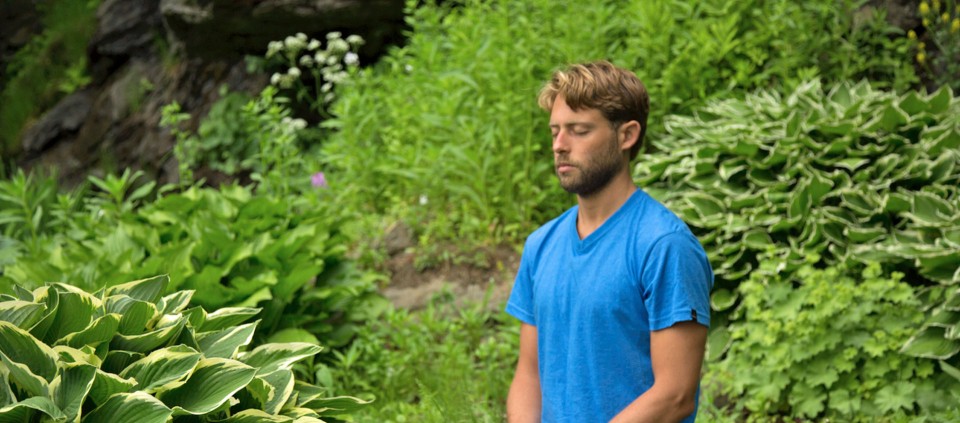The Art of Non-Doing

In a culture moving faster and faster, it seems contagious and desirable to be in a constant mode of comparison, self-improvement, and achievement. Yet the ability to relax is essential for the overall health of the body and mind, as regulated by the nervous system. What can we do to bring ourselves back into balance when the excess of self-conscious “doing” creates more chaos? We can create space and time in our busy lives for “non-doing,” or simply allowing.
Although making time for conscious relaxation may appear challenging and counterproductive at first, the more we do it, the easier it gets. For a few moments each day, we can allow ourselves to lie down and rest, allowing the eyes to close; the muscles of the face, shoulders, and belly to relax; the breath to be smooth; and the mind to flow without restriction.
Our inability to relax often comes from our unwillingness to feel life in the moment, and the fear of trusting what our bodies have to say. We all know the activities that are supposed to be relaxing: a nap, a walk, a bath, quiet music, reading a book—yet how often do we choose these activities? When we do allow ourselves time to rest, we often experience anxiety, boredom, or a feeling of “missing out.” How can we have ambitions, desires, goals, dreams, relationships—and also prioritize relaxation?
The key is trust. Relaxation happens when there is a sense of trust, safety, and belonging. We must trust that we will find our own dance of being with what is around us and what is inside us, ready to blossom. We must trust that life will support our desires and actions. If life hasn’t seemed to make sense so far, trust that it will at some point. Trust that insight comes when the time is right. If we can trust, we can relax. If we can be with any given moment, and trust that what it has to offer is exactly what we need, then we can relax.
Daily Practices for Relaxation
Bringing Awareness to the Body
The body and mind are not separate “things,” but rather intimate partners that inform and respond to each other. This practice is focused on the experience of relaxing the physical body, and the awareness of how that affects the mind. Since many people hold tension, worry, anxiety, etc., somewhere physically in the body it makes sense that, in the midst of a stressful situation, the muscles automatically engage to protect us. The trouble is that, when we become accustomed to a state of stress, the tension becomes more and more chronic.
Before trying to relax the body in the middle of a challenging situation, which may seem impossible, begin by practicing relaxation in neutral, everyday circumstances. The next time you’re driving, standing in line at the grocery store, checking your e-mail, using the bathroom, walking down the hall, preparing dinner, waiting for a friend, or reading a book, take a few moments to scan your body, and notice if there are any muscles that are engaged that don’t need to be. Experiment with allowing those muscles to release and relax, while staying aware of what you’re doing. Most likely, those muscles will re-engage again after some time. Once you become aware of that, allow them to relax again. As you remember to relax your muscles more and more, observe if it has any effect on your mind or attitude toward what’s happening in that moment. Give yourself plenty of space to not do it perfectly. As often as you can remember, bring awareness to your body and invite softening in your shoulders, belly, hands, or wherever you tend to hold tension.
Belly Breathing
Similar to the relationship of the body and mind, the respiratory system and the nervous system work as complements. When the nervous system is in its sympathetic mode (fight-or-flight), the breath become rapid and shallow, the muscles tense, and the blood is sent out to the extremities to prepare for fighting or fleeing. When the nervous system is in parasympathetic mode (relaxation response), the breath becomes deep and smooth, the muscles relax, and the blood is used to support other body systems that promote long-term health and balance (digestive, endocrine, and lymphatic).
Whenever you have a few free minutes, allow yourself to become aware of your breath. Notice how your breath feels moving in and out. Notice how your body moves with the breath. Then, allowing the breath to be smooth and relaxed, let your inhalations deepen and your exhalations lengthen. Allow the air to fill up the lungs so that the belly relaxes and extends forward gently with the inhale. As you exhale, simply allow the breath to flow out of your nostrils. Whether you have 30 seconds or 30 minutes to practice belly breathing, continue to find the balance of allowing the breath to relax and expand the belly, without forcing it in or out. You may find that this practice helps take awareness from the mind down to the base of the torso, which is the body’s usual center of gravity.
© Kripalu Center for Yoga & Health. All rights reserved. To request permission to reprint, please e-mail editor@kripalu.org.
Steven Leonard is a faculty member for the Radiance Sutras School of Meditation, the Kripalu School of Yoga and has been leading teacher trainings for more than a decade.
Full Bio and Programs